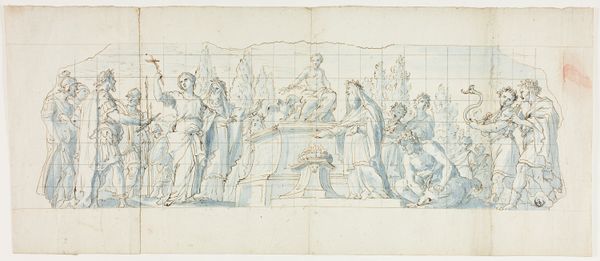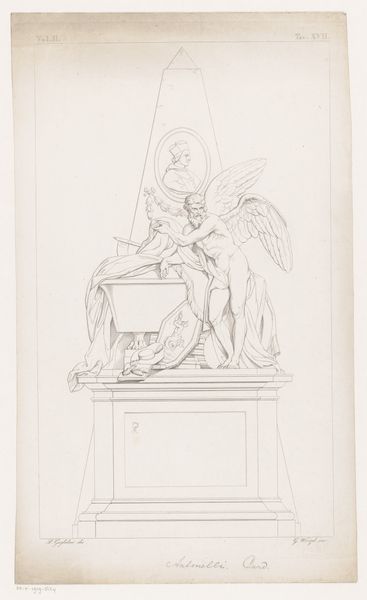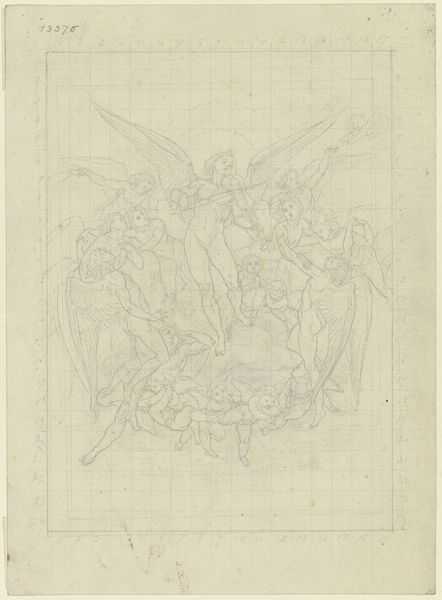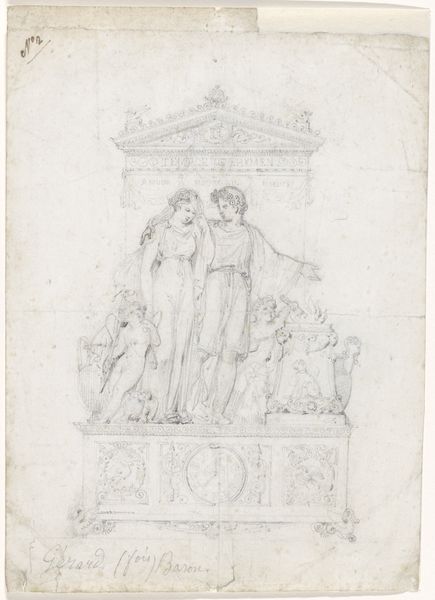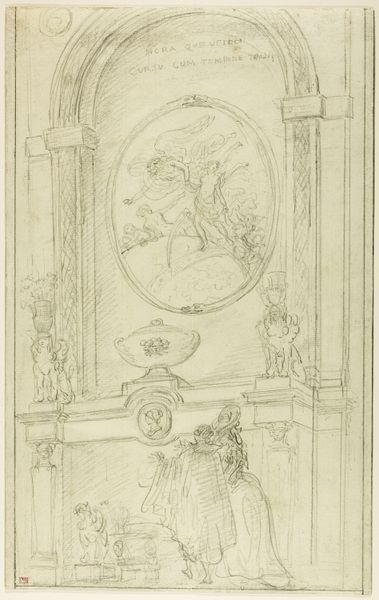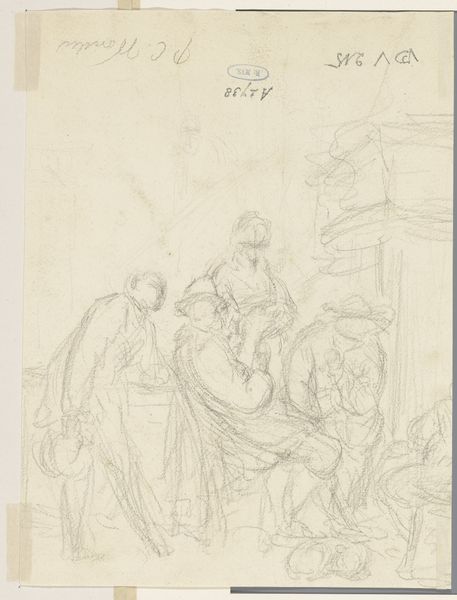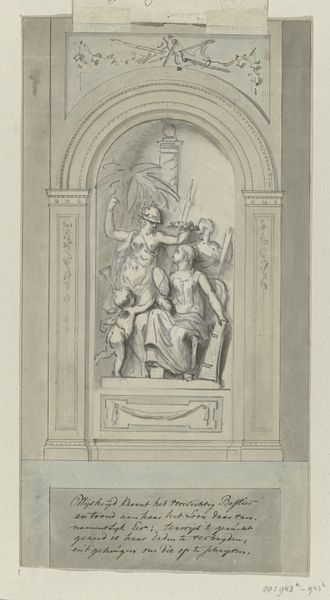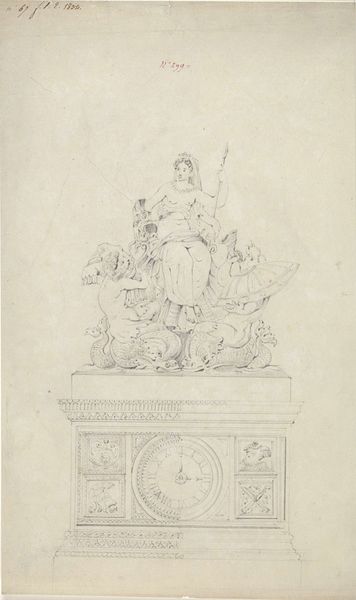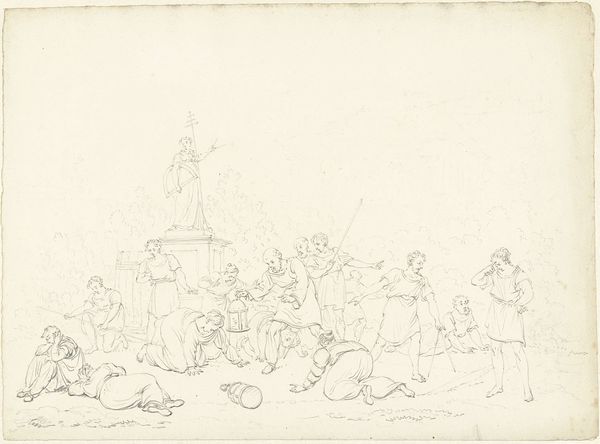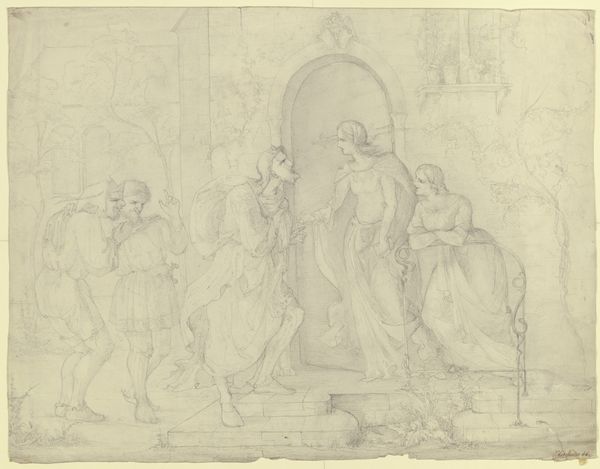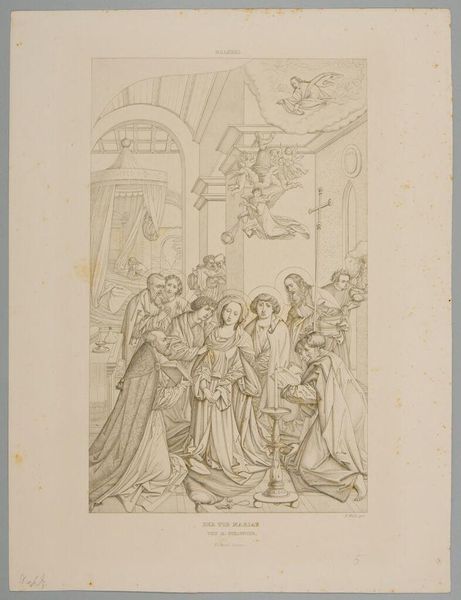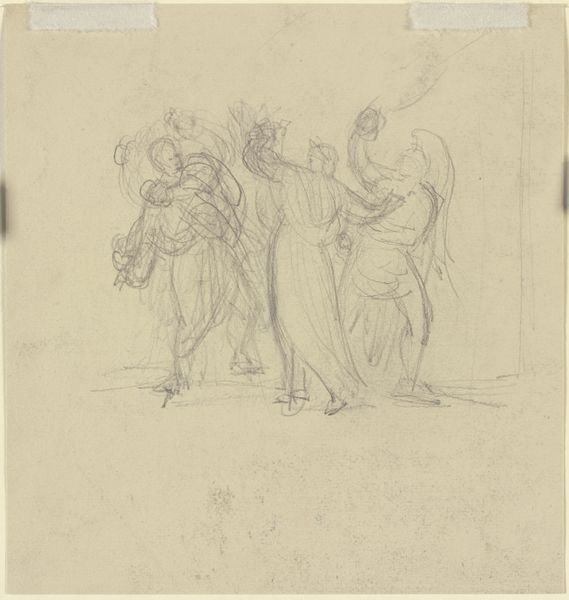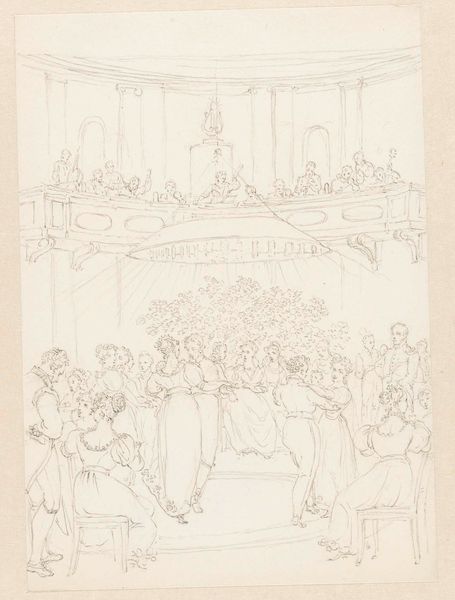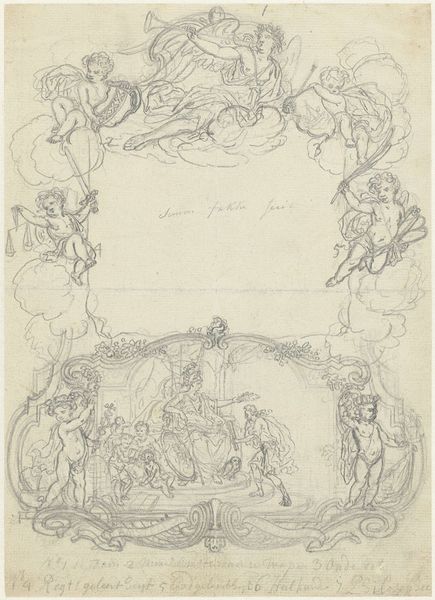
Hulde gebracht door allegorische figuren aan portretbuste van Vondel 1782 - 1837
0:00
0:00
drawing, paper, pencil
#
portrait
#
drawing
#
comic strip sketch
#
imaginative character sketch
#
neoclacissism
#
light pencil work
#
allegory
#
cartoon sketch
#
figuration
#
paper
#
form
#
personal sketchbook
#
idea generation sketch
#
sketchwork
#
pencil
#
line
#
sketchbook drawing
#
history-painting
#
storyboard and sketchbook work
#
sketchbook art
Dimensions: height 274 mm, width 188 mm
Copyright: Rijks Museum: Open Domain
Editor: This drawing, entitled "Hulde gebracht door allegorische figuren aan portretbuste van Vondel," meaning "Homage paid by allegorical figures to a portrait bust of Vondel," created between 1782 and 1837 by Pieter Bartholomeusz. Barbiers, is currently housed at the Rijksmuseum. It’s a pencil drawing on paper, and its delicate linework gives it a rather ethereal quality. What can you tell us about the context surrounding this homage? Curator: The drawing exemplifies Neoclassical tendencies in its subject matter, drawing inspiration from classical antiquity, especially its themes of virtue, civic duty, and, as evidenced here, public recognition of exemplary citizens. What’s interesting to consider is the cultural work this image performs. How does visually representing an "homage" contribute to shaping a collective memory and national identity, particularly through figures like Vondel, a celebrated Dutch poet and playwright? Editor: That makes me think, were images like these common forms of honoring historical figures in that period? Was this meant for public display, or something more private? Curator: That's precisely the question. While this drawing exists on paper, indicating perhaps a study or a design for a larger, more public work like a print or a sculpture, we have to remember that printmaking was a very important part of political and cultural discourse in the late 18th and early 19th century. These kinds of images were circulated among an increasingly literate public to cultivate civic pride and, importantly, a shared understanding of national history. Think about how public art shaped perceptions and ideas, essentially engineering consent and a cohesive culture. Editor: So it’s not just art for art’s sake, but really a tool to build community and shape national identity? Curator: Exactly! It also reflects the societal values of the time, as you see with the celebration of intellectual and artistic contributions, even well after Vondel's death in 1679. Editor: It’s fascinating how much a seemingly simple sketch can tell us about the cultural values and political aims of a particular period. I will never look at public art quite the same way again. Curator: Indeed. Recognizing the public role of art allows us to examine how cultural institutions have historically participated in shaping national consciousness and historical narratives.
Comments
No comments
Be the first to comment and join the conversation on the ultimate creative platform.
